Update Note (2021) — This article published in 2008. The aircraft was then referred to as Skyleader 500. Later this was further upgraded and became the Skyleader 600. Obviously, some information presented below will be dated but much of the flight qualities reporting is still useful. —DJ
Sky Leading KP-5
First, Americans became aware of Kappa. This corporate identity was more easily pronounced than the next company name,
Jihlavan (roughly, “YEE-lah-von”) Airplanes. Now, after new investment and with new global ambitions, the company will be known a “Skyleader Aircraft.” American tongues can relax with this easy reference.
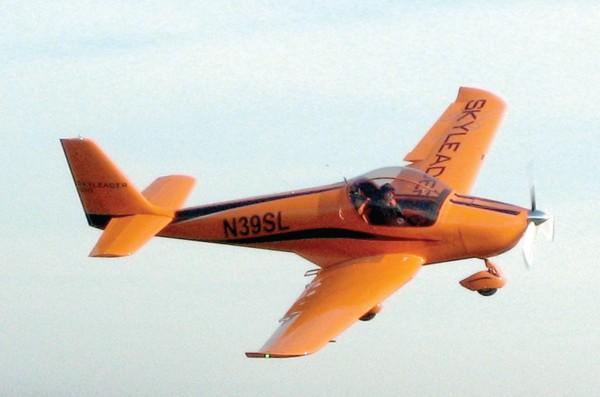 Unchanged are a common owner and the same skilled Jihlavan Airplanes
Unchanged are a common owner and the same skilled Jihlavan Airplanes
technicians building the elegant KP-5/Skyleader 500 from the Czech
Republic. It may not be the biggest seller among light sport aircraft (LSA),
but I find it to be one of the finest flying machines in the fleet. Skyleader
plans to standardize the brand around the world and will rename the KP-5
the Skyleader 500.
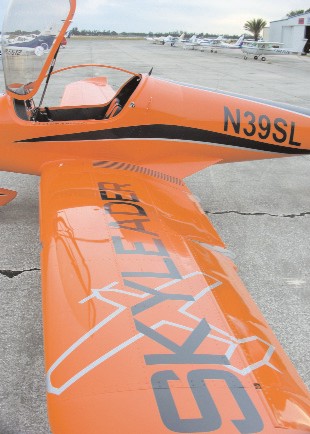 I’ve felt before and confirmed again that KP-5 (now Skyleader 500) is one of the sweetest handling Special Light-Sport Aircraft in the fleet.
I’ve felt before and confirmed again that KP-5 (now Skyleader 500) is one of the sweetest handling Special Light-Sport Aircraft in the fleet.
Skyleader 500 is a handsomely styled, all-metal LSA with a high visibility
cockpit, a high-performance wing with well-regarded Fowler flaps, tough
trailing link landing gear and the 100-hp Rotax 912S powerplant. In ’06, the
company altered the design for American consumption, widening the cockpit
to 47.2 inches, 8 inches wider than a Cessna 172 Skyhawk.
U.S.-based Kappa Aircraft is run by Edwin “Win” Miller, who comes from
an aviation-minded family that lived for a time in the Czech Republic. The
latter experience gives Win the ability to communicate with his Czechspeaking
supplier and to bridge the gap between Jihlavan/Skyleader and
American KP-5 enthusiasts.
Wide Body LSA
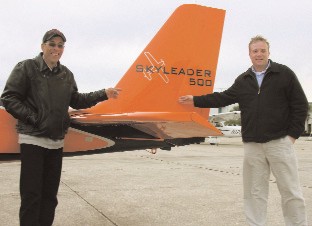
original KP-2U Sova, an airplane much like the KP-
5 Americans have seen but with retractable gear.
Presently a professor at the Czech Brno University
of Technology and head of the Department of
Aerospace Engineering, Pistek has a long background
in airplane development. In an interesting
twist, Pistek also led the design of Evektor’s 5-seat
general aviation design called the Cobra.
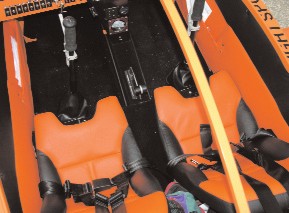
was taken over by Jihlavan Airplanes. In fact, this
was a fairly minor change as Jihlavan had always
provided the facility and workers. Such cooperative
arrangements have long been common in Eastern
European countries. Win elaborates, “All the same
employees are making the Skyleader 500 as before,
providing continuity of the technical knowledge.”
This same statement applies now that Skyleader
has become the new corporate marketing identity.
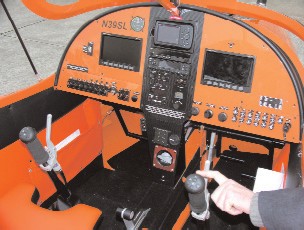
since ’96 so that by late ’04, when Kappa 77 found
itself in financial trouble, the larger company was
encouraged to purchase all design rights and continue
with production.Win says experienced employees
are involved in the Jihlavan Airplanes division.
The larger Jihlavan enterprise is a 250-employee
component manufacturer specializing in aeronautical
hydraulics and actuators selling to Boeing, GE,
and SAAB. Since organizing in ’52, Jihlavan has
built parts for MiGs and L-39s plus many others.
Jihlavan and Kappa 77 worked together to produce
the KP-5 model that Pennsylvania-based
Kappa Aircraft distributes to American buyers as a
Special-Light Sport Aircraft (SLSA).
Fowler Flaps
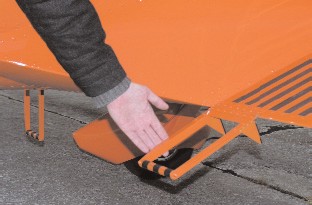
the Kappa at several airshows
where the low-wing model has
been exhibited, one design feature
everyone seems to notice is the
superb Fowler flap execution. As
is common with this flap design,
Pistek and his engineering staff
extended Skyleader 500’s Fowler
flaps well beyond the wing trailing
edge. Not only does this put
them in cleaner air, it adds considerable
square area to the wing,
which helps the design fly well at
slow speeds. The flaps also arc
downward with a wide gap to supply
optimal airflow over the surfaces.
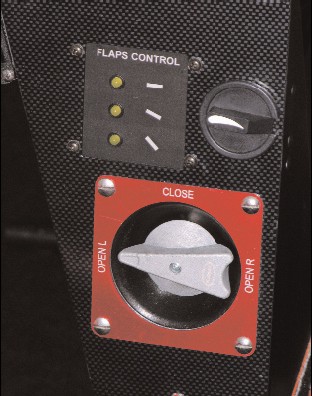
is highly effective with 10°
and 35° of deployment guided by
a track arrangement. In flight you
can see and feel the effect of lowering
and moving aft the flaps to
the first position, and you then
sense a separate action when
those flaps descend noticeably to
the second position.
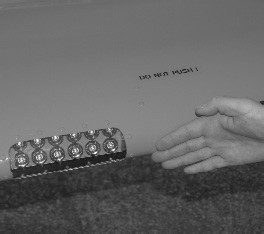
the original KP-5, flaps were
mechanically deployed using a
button-detent Johnson Bar. I
found it took a significant physical
effort to get the second notch
deployed. My in-flight recorded
notes reflect that I had to yank
hard on the lever to engage maximum
flaps. Factory pilots used to
advise engaging the flaps at slower
speeds. Engineers even defended
the effort, saying the use of
mechanical actuation kept pilots
from lowering the flaps above recommended speed.
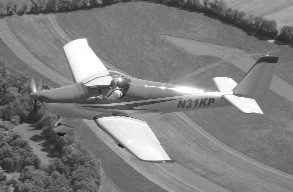
prevailed and today’s wide-body Skyleader 500 has
electric flaps among several other changes. As
Skyleader has taken the reins, a new, easier-to-use
flap lever and position indicator are within easy
reach on the T-panel.
One of the most notable features of the KP-5 was
its staggered seat design that positions the left seat
6 inches in front of the right seat. Not everyone liked
this arrangement though I found it desirable for two
reasons: one, it afforded
more elbowroom to each
occupant and two, it
allowed either seat to have
a relatively unobstructed
view out both sides. The
ultralight Earthstar
Odyssey also successfully
employed this seating
arrangement. Skyleader
advises that the staggered
seat will remain as an
optional choice into the
future.
Just Introduced
However, as the ’08 U.S.
Sport Aviation Expo concluded
in January, Kappa’s
weather-delayed 2008
model revealed the newest
wide body variation. The
company showed side-byside
seating without the
stagger and they renamed the plane Skyleader 500
LSA.
After the company widened the cockpit to one of
the broadest in light aviation, people increasingly
inquired about the value of the staggered seats.Win
and the Czech engineers heard the market speaking.
So, one of Skyleader’s first moves was switching to
conventional side-by-side seating. The wide-body
version of Skyleader 500 pushed the cabin beyond
47 inches, significantly broader than Cessna’s
benchmark 172 Skyhawk 4-seater.
The Skyleader 500 LSA that finally made it to
Sebring, Florida, also showed a new step to aid
entry. Steps on each side hinge and can streamline
in flight. The revised model also showed a new interior
finish, a new flush-mounted leading edge landing
light employing LED lights (“very bright,” says
Win), and other refinements such as cleaner looking
engine cowl fasteners and a more intuitive flap
switch.
“Flight schools like the Wide Body’s extra width so
they can handle bigger students,” reports Win. But
all occupants will enjoy the extra space. In keeping
with the thoughtful design of Skyleader 500, the
enlargement is well done without an obvious bulge
to identify how they created the extra space. Inside,
the center console was made narrower in the ’06
upgrade yielding more foot room. In all, Americans
of any size should sense a comfortable cockpit.
The wide-body Skyleader 500 also has thicker
wing skins (now .027 aluminum and easily meeting
ASTM standards) fastened with filled pop rivets.
While such a change seems aimed at structural
upgrading, the plane seems to have a more solid feel
with no “oil-can” sounds audible to the occupants.
A button on the side of the hand brake helps set
the parking brake. Similarly, a starter button is mounted
on the left side of the throttle, though it is
now indented so it can’t be inadvertently bumped.
“The final location may change in the future,” indicates
Win. While this is an unusual location, the
starter is certainly easy to reach while maintaining
full control of the throttle. Other minor features are
also done differently, for example, the friction lock is
unique in my experience. But overall, the Skyleader
500 exhibits professionally achieved hardware.
Electric in-flight trim is optionally operated by
either left or right joystick switches, but not both, so
that both pilots cannot simultaneously move that
control. As is often the case when installed in this
location, the switch creates fairly fast response so
the better technique is to hit the button a series of
times and rarely hold it down. A small indicator
mounted to the left of the airspeed indicator on the
far left side of the panel provides a good visual display
of which way you’re moving the trim.
Fortunately I was able to feel the effects of trim
quickly as the indicator was not a ready glance for a
pilot seated on the right. Since my flight, the trim
indicator has been moved to the center of the panel
for improved visibility by both pilot and co-pilot,
reports Kappa Aircraft.
Seats adjust via a lever under the seat, like car
seats. You can easily shift fore and aft while seated.
The seat cushion may feel short while you are
adjusting the seat, but since the cushion extends on
either side of the joystick it proved comfortable once
belted in position.
The Skyleader 500 rudder pedals are interesting
in that they hang low, contacting your foot about the
middle and affording a good control feel. As with
many things about the 500, this is a bit different but
a good difference.
The Skyleader factory is now offering higher quality
interiors including leather; interiors are similar
to Airtex brand in the U.S., says Win. The bright
orange example in the photos shows the new leather
seats with racing-seat-like bolsters.
Each joystick also has a push-to-talk switch allowing
you to keep your hand where it belongs during
takeoffs and landings. Across the
panel all-electric switches are
hooded or guarded to prevent their
inadvertent movement. Unusual in
a light sport plane, the Skyleader
500’s twin fuel tanks are switchable.
You can burn one side more
than the other to aid lateral balance.
Wide-Body Visibility
KP-5 pilots have very good visibility
over the nose even from the
more-aft right seat. Naturally it’s
optimal from the left seat.
Staggering the seating allows
each pilot to see laterally, but also
works well for an instructor to let a
left-seat student feel like he or she
is pilot-in-command. And it let
Jihlavan Airplanes’ engineers keep
the cabin width narrower to
improve performance and fuel
usage. Seats in the new model are
the same size, but elbowroom is
reduced from the staggered version.
The canopy latch was redesigned and remounted
from the side to the overhead support with pins that
secure the sides of the canopy. It all happens with
one motion that either occupant can make.
Jihlavan provides a baggage area large enough to
hold 66 pounds, says the company. Baggage goes aft
of the seats and the adjustable-position seats lean
forward for access to the cargo area. Using a technique
like removing a drawer from a desk, you can
readily remove the seats to fill the cargo area to its
maximum allowed capacity.
You can also put some items in the standard hat
rack compartment, although Win noted that if an
emergency airframe parachute is chosen, the hat
rack is not available.
Toe brakes were installed only on the left seat
though Skyleader is working to offer toe brakes on
both sides as an option in the future. So far, most
American customers have ordered a hand brake
mounted to one or both joysticks. The hand brake is
also hydraulic. If customers choose this option, the
rudder pedals can then be adjusted for greater seating
versatility.
Flight Qualities
When Win and I flew around central Florida, I
wrote, “The KP-5 is one of the best handling aircraft
I’ve had the pleasure to fly.” When I updated my
flight experience in the Wide Body KP-5 with Frank
Cuba, I was pleased to discover the earlier flight
qualities had not degraded when the fuselage was
widened. Among other low-wing LSA I’ve flown, the
KP-5/ Skyleader 500 remains one of my favorites.
Harmony in the controls is quite good. Pressures
are light and response is crisp without being sudden.
The Skyleader 500 can also make a good trainer
– its sturdy gear also serves this purpose – yet
experienced pilots will also appreciate its fine combination
of control ease and authority.
I figured rolls from 45° to 45° took about 3 seconds,
an estimate with which Cuba agreed. The
Wide Body Skyleader 500 offers very responsive
handling with modestly light control forces. Yet if
you bump the 500’s joystick during a cross-country
flight – as you might while checking a map or making
a GPS adjustment, you won’t upset the flight.
Steep turns went well in the Wide Body model. I
added a touch of power but then I ended up climbing
slightly in both left and right turns. The controls
weren’t at fault; I tended to raise the nose too much
and we ended up climbing gently when I didn’t
mind the altimeter. When the nose is in the proper
attitude it appears you are beginning a shallow
dive. The good visibility over the nose creates a
favorable impression once you adapt.
Cuba also flies an RV-8 but claims to prefer the
KP-5 to the popular Van’s model. For cutting
through turbulence, the Kappa is strongly his
preference. He attributes this capability to what
he calls a “complex wing.” He explains that as you
examine the wing, you see that at each bay the
line of rivets changes illustrating the wing’s
sweep and taper.
Although the KP-5 slows down well as proved
by my experience with stalls, controls remain very
responsive right down to minimum flying speeds.
With those Fowler flaps extended well aft, the airplane
seems content flying at 45 mph.
The 100-hp Rotax 912S engine provides excellent
performance on this 1,278-pound gross
weight airplane. Climb rate was 800 to 900 fpm at
2,000 feet msl on an 80°, moderately humid day in
central Florida. At a slightly modest 4,900-rpm
power setting and at a low altitude, we were indicating
115 to 120 mph.
In a timed 1-minute descent rate check with
power to idle thrust and best glide speed of 70
Dynon mph, the KP-5 descended 550 feet.
Jihlavan developers claimed that with retractable
gear and an adjustable prop, the KP-5’s glide
could be 18:1. With fixed gear and prop they feel
glide remains a very respectable 14:1. Whatever
the numbers, I could feel our test plane stretch a
glide and sink slowly.
Fuel sources are 8.5 gallons per wing tank filled
with your choice of low-lead avgas or high-test
auto gas. You can elect two more 4-gallon tanks
for a total of 25 gallons, which would equate to
more than 5 hours of range that could take you as
far as 650 miles.
The KP-5 gear is very forgiving and feels very
sturdy. I had three landings and Cuba said I tended
to raise the nose unnecessarily high, which
caused me to plop in on the gear. However, this
showed how wonderfully well the gear cushioned
my touchdowns. Cuba appeared not to have the
slightest concern as I made these highly scientific
evaluations.
Given the combination of low sink rate with
effective flaps and good low-speed handling, the
KP-5 accommodates takeoffs and landings with
ease. You may deploy those excellent flaps at 68
mph.
Comfortably Stable
I performed approach and departure stalls plus
accelerated stalls. Most fell to the right a little
faster than I’d consider optimal, but recovery was
always easy. In no case was power required to
recover from stall with minimal altitude loss.
After noting the right-hand break, I paid extra
attention when I did accelerated stalls to the
right. But even with the wing bank at about 45°,
the Kappa KP-5 rolled out level, confirming the
reasonable stall characteristics of this airplane.
My speculation is that this good quality may result from slipstream effect on the tail.
In accelerated stalls, a pronounced burbling identified
incipient stall. This was less evident in straight-ahead stalls,
but when the nose fell through it proved quite a benign
action.
All stalls came at very low speeds. Given instrument error
at the bottom of the range, I don’t know if I can believe the
38-mph indication for stall. This represents only 38 mph,
making it 13.8 mph slower than the maximum for light sport
aircraft. Regardless of actual numbers, it’s clear the KP-5
stalls very slowly, a great quality for instructional use. And,
in case you were wondering, all stalls were done without
using the superb Fowler flap system.
Checking longitudinal stability and disturbing the joystick
significantly forward produced a dive speed of about 120 mph
(per the Dynon set in mph). In just two oscillations, the KP-5
had returned to essentially level flight. Disturbing the stick
aft and releasing required three oscillations, but both showed
excellent stability with adverse pilot input.
Power stability showed that when power was reduced
swiftly from level trimmed flight, the KP-5 dove to 118 Dynon
miles an hour. When applying full power from level trimmed
flight, the KP-5 quickly leveled out.
Premium-Priced Kappa, er Skyleader
As ’08 began, the base price of the Skyleader 500 Wide
Body remains $113,000, as it was in ’07 and despite a significant
climb in the euro/dollar exchange rate. Thoroughly
equipped with dual Dynon displays, a Garmin 496 plus
radios, autopilot, and most other desirable equipment the
Skyleader has to offer, the KP-5/Skyleader 500 as tested was
priced at $138,000, making it an upper range SLSA.
Even at the base price you get quite a bit of value: 2 hours
of orientation flying, Garmin SL 40 radio and transponder,
VFR flight instruments and basic engine instruments, ELT
(required on an LSA but not always included in the base
price), hydraulic brakes, dual controls, cockpit lock, electric
trim, two (tail and belly) anti-collision lights, fuel gauges, fuel
pressure gauge, oil temp, tachometer, oil pressure, CHT, battery
recharging indicator, 12-volt socket, engine hourmeter,
VSI, altimeter, ASI, compass, and bank indicator.
Pilots considering a new LSA have many interesting choices
and price plays a major role or we wouldn’t have some
models available in the $60,000 range (and yes, some are genuinely
available at that cost, fully built, ASTM-certified, and ready to fly home). Keeping it all in perspective,
most kit-built airplanes are hard to get in the air
with engine and basic avionics for less than $40,000
(though some ultralight kits remain aviation’s
greatest bargains).
The Skyleader 500
may appear premium
priced and equipped; yet
after you’ve made payments
for a few years,
the total you paid may
no longer be as critical
as it seems when you
first contemplate financing
a $115,000 to
$130,000 airplane. With
AirFleet financing, you
could put down $26,000
(the price of some ultralight
kits with engine),
and make $877 monthly
payments. Does that
make the purchase tolerable?
If not, a growing
number of partner plans
can help you and a few
friends jointly own a KP-5. Or you could talk your
local flying club into
acquiring a Skyleader 500. Unless I miss my guess,
any airplane that flies as sweetly as a 500 would
find a substantial following in the USA. Go take a
demo and see if you don’t agree.
| Seating | 2 side-by-side, staggered |
| Empty weight | 695 pounds |
| Gross weight | 1,278 pounds |
| Wingspan | 32.5 feet |
| Wing area | 128 square feet |
| Wing loading | 10 pounds/square foot |
| Useful Load | 583 pounds |
| Length | 23.6 feet |
| Payload (with full fuel) | 481 pounds (standard tanks) 1 |
| Cabin Interior | 47 inches |
| Height | 8.6 feet |
| Fuel Capacity | 17 Gallons )1 |
| Baggage area | 66 pounds including optional hat rack |
| Airworthiness | Certified SLSA |
| Notes: | 1 Optional fuel tanks add 8 gallons, making payload 433 pounds. |
| Standard engine | Rotax 912S |
| Power | 100 hp |
| Power loading | 12.8 pounds/hp |
| Cruise speed | 101 kts/116 mph (75% power) |
| Stall Speed | 38 mph (see article) |
| Never exceed speed | 141 kts/162 mph |
| Rate of climb at gross | 1,100 fpm |
| Takeoff distance at gross | 300 feet |
| Landing distance at gross | 450 feet |
| Range (powered) | 4 hours, 450 miles 1 (no reserve) |
| Fuel Consumption | about 4 gph |
| Notes: | 1 Range with optional fuel tanks, 650 miles. |
| Standard Features | Rotax 912 with electric starting, VFR panel instruments, engine instruments, Garmin SL 40 radio and transponder, fuel boost pump and quantity gauges, fuel selector, 3- blade prop, sliding canopy (cannot be opened in flight), hydraulic brakes, electric flaps and pitch trim, dual controls, 4-point pilot restraints, entry doors on both sides, staggered seating. |
| Options | Additional instrumentation including glass displays, radio choices, lighting package, long-range fuel tanks, Garmin GPS mount, custom paint, BRS ballistic parachute, leather interior, covers. |
| Construction | Aluminum semimonocoque airframe, all-aluminum wing and surfaces, steel cockpit reinforcements. Made in Czech Republic; distributed by U.S.-based importer (Pennsylvania). |
Design
Cosmetic appearance, structural integrity, achievement of design goals, effectiveness of aerodynamics, ergonomics.
Pros – Sleek, low-wing entry redone in ’06 to better
suit the model to Americans. Further upgraded in early
’08. Wider, roomier, better equipped, and needed electric
flaps. The Skyleader 500 is one of the top LSA contenders
by design sophistication and meeting design
goals in ways unlike other LSA.
Cons – To reach such a capable design, Jihlavan
developers didn’t follow standard methods; minor controls
can be counterintuitive. Production volumes are
not high for the Skyleader 500 (though rising, says
Skyleader); only a couple dozen on U.S. registry. Some
repairs will require long travel due to low (though
growing) number of representatives in a big country.
Systems
Subsystems available to pilot such as: Flaps; Fuel sources; Electric start; In-air restart; Brakes; Engine controls; Navigations; Radio; (items covered may be optional).
Pros – Electric trim and flaps are standard and
work well. Electric trim was especially effective and
Fowler flaps are a joy. Hydraulic brakes, usually
ordered with hand lever, were effective; toe brakes
optional at either seat. Dual wing tanks; can be
increased for good range.
Cons – Control buttons on the joystick were not
fully intuitive; same for starter button on throttle.
Thank goodness for electric flaps; former mechanical
lever were difficult. Engine access involved cowl
removal (though new hinged doors make this easier).
Control reach from further-aft right seat presents some
drawback (though new seating should improve this).
Cockpit/Cabin
Instrumentation; Ergonomics of controls; Creature comforts; (items covered may be optional).
Pros – Wing-based entry eased, as you can stand
upright on the floor. Four-point pilot restraints. Bigger
occupants may truly appreciate the roominess afforded
by staggered seating (though now being changed).
Seating allows an unobstructed view out each side for
each occupant. Heating and cooling vents provided
standard. Seats adjust in flight.
Cons – Staggered seats are less optimal considering
control reach for the right seat occupant (though
side-by-side now standard). Panel readability also suffers
somewhat. Lower-hanging rudder pedals may not
work for everyone. Entry on the wing is problematical
for less limber pilots.
Ground Handling
Taxi visibility; Steering; Turn radius; Shock absorption; Stance/Stability; Braking.
Pros – Visibility is very good over the sloped
Skyleader 500 nose; true on the ground or in flight.
Staggered seating provides lateral visibility for both
occupants. Trailing link suspension absorbs loads well.
Hydraulic braking was effective (toe brakes optional;
tested with hand lever). Good clearance for turf fields.
Cons – Hand brakes don’t please everyone (toe
brakes are available for those pilots). The Skyleader
500 turns well, but not so sharply as a freely castoring
nose- or tailwheel. Nondifferential braking lessens taxi
maneuverability (toe brakes fix this at optional cost).
Takeoff/Landing
Qualities; Efficiency; Ease; Comparative values.
Pros – Ground roll on takeoff was short (300 feet,
per factory). Takeoff and landing visibility are excellent
over sloped nose. Approach speeds can be held low, 40
mph with practice, thanks to Fowler flaps which
enlarge wing area. Excellent trailing link suspension
system absorbs hard landings with ease.
Cons – You can raise the nose so high allowing flow
separation and hard touchdowns (though experience
will cure this quickly). Slips were modestly effective.
Long glide (14:1) makes for longer touchdowns than
takeoffs and encouraged too-high nose landings.
Control
Quality and quantity for: Coordination; Authority; Pressures; Response; and Coupling.
Pros – One of the Skyleader 500’s outstanding features
is handling – precision, ease, lightness but not too
light or squirrelly; few will find any fault in this category.
Coordination was excellent. Precision turns to
headings were accurate from the start and the
Skyleader 500 holds a steep bank turn easily with a bit
of power.
Cons – The sloped nose that improves visibility
requires some familiarization to hold level attitude.
Climbing turns result from inattention to this characteristic.
No other negatives.
Performance
Climb; Glide; Sink; Cruise/stall/max speeds; Endurance; Range; Maneuverability.
Pros – While not the top-speed performer among
LSA, the Skyleader 500 offers a well-rounded package.
Flies brilliantly at low power settings even without
Fowler flaps and more so with full deployment. Sink
rate was good at about 500 fpm. Long glide capability
(14:1, says factory) aiding any low-approach situations.
Cons – Those flying long cross-country flights may
yearn for a few more miles an hour (though even the
138-mph max speed isn’t high for extended flights).
Landing distance (450 feet), a result of the long glide, is
not optimal for the shortest strips (though a slow
approach will work at most fields).
Stability
Stall recovery and characteristics; Dampening; Spiral stability; Adverse yaw qualities.
Pros – Power-off stalls broke clearly but modestly
at very low speeds. Accelerated stalls rolled to level
from both directions. Longitudinal stability tests were
good with quick recovery to level flight. Power stability
checks showed proper responses. The Skyleader 500
could work for less experienced pilots.
Cons – Tendency noted in two KP-5 aircraft (wide
body and earlier) to fall to the right more abruptly than
considered optimal (though recovery was never in
doubt). Adverse yaw was about as expected. No parachute
installed on test airplane, though Kappa does
offer the equipment.
Overall
Addresses the questions: “Will a buyer get what he/she expects to buy, and did the designer/builder achieve the chosen goal?”
Pros – Upper-range LSA choice that flies and performs
excellently. Good flight school or recreational use
aircraft. Handles well at slow speeds. Sturdy construction
made more robust in ’06. Base-price model well
equipped. Importer has close connection to Czech factory
and has an established U.S. presence.
Cons – an established U.S. presence.
CONS – Premium price may limit resale market.
Holds a smaller market share, which may give some
buyers pause, potentially affecting resale. Fewer dealer
outlets than larger selling brands. More expensive than
several other LSA designs.


Leave a Reply